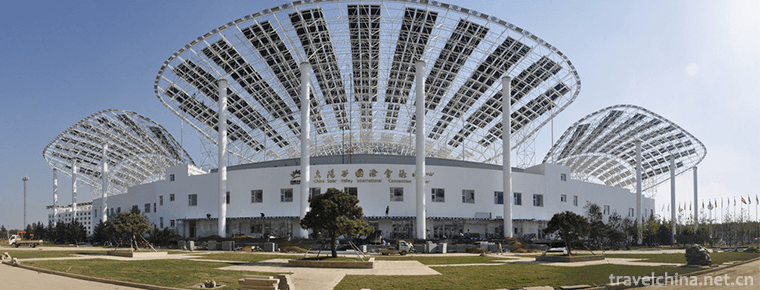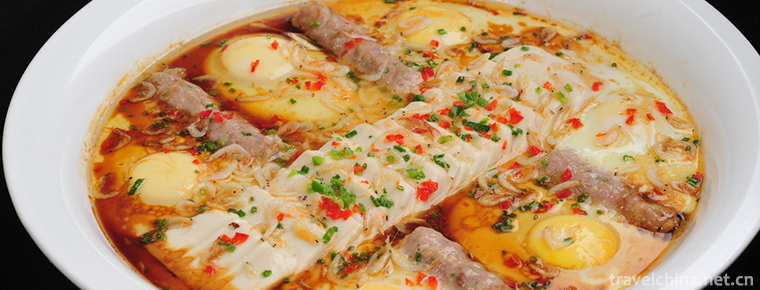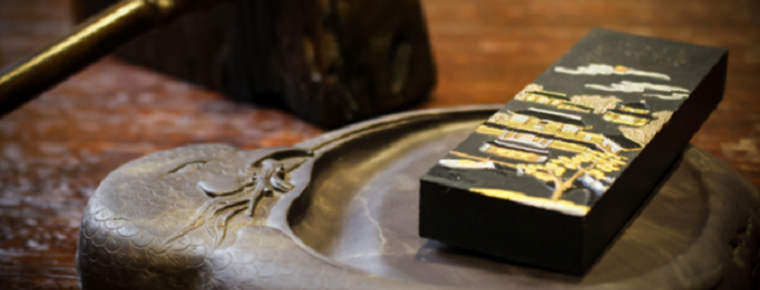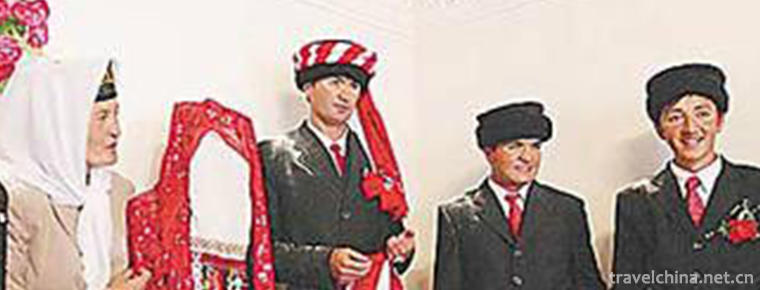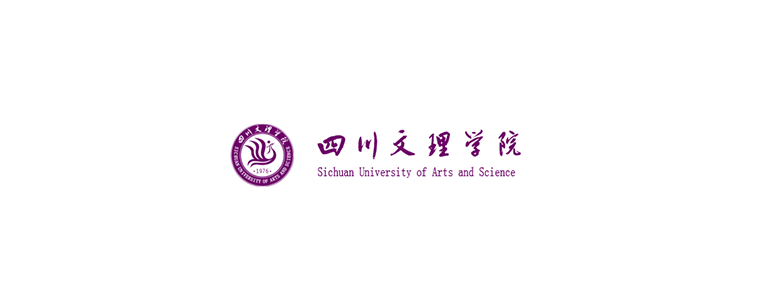Guangdong Opera YueJu
Guangdong Opera
Guangdong Opera, also known as "Guangdong Opera" or "Grand Opera", is one of the traditional operas in Guangdong. It originates from Nanxi Opera and is popular in Guangdong and Guangxi provinces, Hong Kong and Macao. It is also performed in Cantonese-speaking Chinese-speaking areas abroad. Since the Jiajing period of Ming Dynasty, it has appeared in Guangdong and Guangxi. It is a performing art of chorus, singing, playing, stage costume and abstract form. Every line of Cantonese opera has its own unique dress.
Guangdong Opera is listed in the first batch of 518 national intangible cultural heritage lists published on May 20, 2006. On September 30, 2009, Guangdong Opera was affirmed by UNESCO and included in the list of world intangible cultural heritage.
Historical Origin
Cantonese opera is a kind of opera formed by Cantonese artists who absorb opera tunes from other provinces into Cantonese opera troupes, sing in Easy Language and melting into local ballads and ditties. In the mid-Ming Dynasty, there were folk children living in drama in central Guangdong. From the beginning of Jiajing in Ming Dynasty, Yiyang Opera and Kun Opera appeared. During the reign of Yongzheng in Qing Dynasty, Guangzhou sang "Cantonese Tune" when performing "Tuyou". In the reign of Qianlong, the local class artists set up the Qionghua Club Hall in Dajiwei, Foshan Town. During the period from Qianlong to Daoguang, hundreds of Waijiang Opera Troupes from other provinces came to Guangdong and established the Liyuan Guild Hall in Guangzhou. The local class draws artistic nourishment from the vocal tune and performance of the Outer River Class, and gradually forms the performance style of singing Bangzi Tune. In the fourth year of Xianfeng (1854), Li Wenmao, a local class artist, organized the Red Scarf Army uprising against the Qing Dynasty with the children of Liyuan as the backbone. The Qing government strictly prohibited local class performances. The artists had to switch to Waijiang class or pretend to be Beijing Opera. In the early years of Tongzhi, the local class rose again, and in the fifteenth year of Guangxu (1889), the Eighth Congress Hall was established in Guangzhou. At this time, the local class absorbed the Er-reed tune, mainly Bangzi and Er-reed tune, and also used the Da-qiang (local Yiyang and Kun tunes) to perform many plays, such as Jianghu 18, Xin Jianghu 18, Taipai 18 and so on. Performing roles are divided into Wusheng, Zhengsheng, Xiaosheng, Xiaowu, Zongsheng, Gongzu, Zhengdan, Huadan, Jing and Ugly. Wushu skill is a southern martial art evolved from Shaolin martial arts. When performing the original "Six Kingdoms Closing Phase", more than 100 people appeared in the theatre, with flourishing flowers and chirping local sounds, which are quite different from other kinds of operas. Early Cantonese opera troupes shuttled along the Pearl River inland river on a specially chartered "red boat" to perform in various ports, so they were also called "disciples of the red boat" by Cantonese opera artists. At the end of the Qing Dynasty and the beginning of the Republic of China, theatres were built in Guangzhou, Hong Kong and Macao. The local class of the new Cantonese opera gradually shifted from the local stage in the countryside to the performance in the city theatre. Since then, the provincial and Hong Kong large class flowing between large and medium-sized cities appeared. In order to meet the needs of city audiences and theatre performances, there emerged actors who compiled scripts. Most of their new plays were magnificent and exquisite birthday performances. The Xiashifu Class, which was performed in the western part of Guangdong Province, is still good at performing Wusheng and Xiaowu Danggang's original plays, maintaining its rough and simple artistic features. During the Guangxu Period, the prefectural government classes which had left their homeland and crossed the port one after another were performing more in some overseas countries.
Around the 1911 Revolution, some Cantonese opera artists, influenced by the trend of democratic revolution, participated in the activities of the League advocated by Sun Yat-sen. In order to propagandize the idea of democratic revolution, some people organize classes of idealists to promote the reform of Cantonese opera. Afterwards, influenced by the improved atmosphere of Cantonese opera and the need to compete with the rising movies with the spirit of innovation, various factors of the comprehensive art of Cantonese opera have undergone significant changes. The repertoire includes ancient, modern, Chinese and foreign themes, with thousands of new writers. Xiaosheng and Xiaowuxing should change from fake voice to real voice. Bangzi, Erhuang, Yiyang and Kun tunes are quite different from their original tunes. Bangzi and Erhuang tunes have created new patterns and sentences. The folk popular tunes such as woodfish, Nanyin, Cantonese and Banyan can be used in singing tunes. They can make comprehensive use of multiple tunes by means of the combination of tune linking and the change of the pattern. In addition to the original national accompaniment instruments, violin, saxophone, guitar and other Western instruments have been added. Cantonese opera singing music is more flexible and melodious. The performing arts absorbed the merits of Peking Opera and the martial arts of the Northern School. Drawing lessons from movies and dramas, they focused on the real and close-to-life performing methods, and formed a performance system with Wusheng, Wenwusheng, Xiaosheng, Zheng Yindan, Huadan of the Second Band and Ugly Sheng as the pillars, which produced a variety of genres of singing tunes in Sheng, Dan and Ugly Sheng. From the 1930s to the 1940s, five schools emerged on the stage of Cantonese opera, namely Xue Juexian, Ma Shizeng, Bai Jurong, Liao Xianhuai and Gui Ming, which dominated the reform direction of Cantonese opera and created many excellent songs. The stage scenery is from one desk and two chairs to plane, three-dimensional scenery and even organ scenery. Lighting develops from hot water lamp and headlamp to electric lamp and color rotary lamp.
There are different opinions on the emergence and formation of Cantonese opera. However, it is generally believed that Cantonese opera began to germinate in the mid-Ming Dynasty and was bred in local classes. Generally speaking, the source of the local class is to quote the statement of "A Brief History of Guangdong Drama" written by Mai Xiaoxia, according to "A Brief History of Guangdong Drama": "Yongzheng Succession... Zhang Wu, a famous actress in Beijing, was the fifth stall holder. Escape to Guangdong and live in Dajiwei, Foshan Town... The Kunqu Opera of Beijing Opera was taught to the sons of the Red Boat, and their organization was changed to Zhang's scale. The Qionghua Guild Hall, as the origin of the local class of Cantonese Opera, has shortened the history of the local class of Cantonese Opera. It was not only in Yongzheng that the Qionghua Guild Hall was founded. According to historical records, as early as the Ming Dynasty from Jiajing to Wanli, in Foshan and Guangzhou, the local class has established the industry organization of Qionghua Guild Hall. Through continuous development, it is composed of Yiyang and Kunqiang tunes, folk tunes such as Nanyin, Dragon Boat, Muyu, Yuejian, Saltwater Song and Guangdong instrumental music, which are popular in Guangdong. Until the end of the Qing Dynasty and the beginning of the Republic of China, it gradually evolved into a local drama with distinct Lingnan characteristics - Cantonese Opera. Cantonese opera is different from other provincial operas in that it belongs to the category of Chinese freehand dramas, and has a lively, fluent and changeable personality, enjoying the reputation of "South Red Bean".
Cantonese opera originated from Southern Opera, also known as "Grand Opera" or "Guangdong Grand Opera", and originated from Foshan . As early as the Han Dynasty, the Performing Arts in Foshan were very popular. Since the Jiajing period of the Ming Dynasty, Guangdong Opera has appeared in Guangdong. It is a performing art of kneading, singing, playing, musician's music, stage costume, Abstract form, etc. It is a large Southern opera in China, which combines Haiyan, Yiyang, Kunshan and Bangzi tunes flowing into Guangdong since Ming and Qing Dynasties and absorbs folk music from the Pearl River Delta.
In the mid-1940s, Cantonese opera spread from Hong Kong after its opening to Singapore and Malaysia in Southeast Asia. Since then, Singma's Cantonese Opera has also flourished, so Singapore is known as "the second home of Cantonese Opera". Cantonese Opera is called Cantonese Opera by Westerners. The name of Cantonese opera , although only appeared in Guangxu period of Qing Dynasty, can be traced back to the mid-Ming Dynasty more than 400 years ago. During the 30 years before the founding of the People's Republic of China, Cantonese opera was basically divided into two groups: the "provincial and Hong Kong big class" and the "mountain-crossing class" (or "homeless class").
In the Ming Dynasty, Yiyang Opera, a Southern Opera, was popular in Guangdong. Kunban, Huiban, Jiangxi and Hunan Opera Troupes often performed in Guangdong. Influenced by the outside world, Cantonese also practiced operas, and then formed a local theatre as the main body, and transition to the local theatre as a whole. To distinguish the two, the former is called "Waijiang Class" and the latter is called "Local Class". At the time of Qingdaoguang, Mr. Yang Zhangsheng believed that "the music part of Guangdong is divided into two parts: the Waijiang class and the local class". "The situation is quite different between the class of Waijiang and the class of Huizhou and the class of Xiban. Nevertheless, in the early days of the establishment of the local class (Ming Dynasty), the difference between the local class and the Waijiang class was mainly not the difference in the vocal cavity, but mainly that the class was composed of local people. In a narrow sense, it refers to a professional theatre composed of local artists; in a broad sense, it can also include a temporary performance group composed of farmers and handicraftsmen performing seasonal activities.
When did Cantonese (local) participate in theatrical performances? Mr. Guo Bingzhu, in his article On the Ancient and Modern of Guangdong Opera, believes that Zhuangqu Letters, written by Gui Youguang in the Ming Dynasty, first recorded the oracle of the people who Imperialized the Wei School in the 16th year of Zhengde in the Ming Dynasty. "No pornography, repetition of emperors of past dynasties, slander of ancient and modern, offenders ask questions" and other words. Mr. Guo Bingzhu believes that this is the earliest record of theatrical performances in Guangdong. He believes that it can be proved by the instructions to the people that local people took part in theatres during the Ming Zhengde period, that is, more than 400 years ago, there were theatrical performances in Guangdong. This is undoubtedly an advanced discovery, but in Foshan Shiwan "Taiyuan Huo clan genealogy" found a more advanced counter-evidence than the above. That is to say, during the reign of Zhengde and the reign of the two emperors, the local people of Foshan participated in the theatre performance. The genealogy has the following records: "One year's scenery, Lantern Festival Liquor, March 3rd decoration, May 5th Dragon Boat, July 7th acting, secular, difficult to prohibit reform... What good is it for people to rent clothes, borrow jewellery, or wet or damaged by rain, to compensate for the price on March 3rd.
The children of a good family should not learn from the play of July 7. Although learn to sing and watch with others, it is the younger generation, lost in general... Later generations, follow my wishes." This episode was written in the seventeenth year of Chenghua in the Ming Dynasty (1481 AD), 40 years earlier than that of Zhengde in the sixteenth year (1512 AD, 1521 AD). In addition, from the genealogy of "July 7th performance, secular monks" to analyze, it can be said that as early as 1481 AD, that is, more than 500 years ago, Foshan people have long been "secular monks" to participate in theatrical performance activities .
Li Wenmao, the "Fengzi Fengwang", is the only artist who has become the leader of the peasant uprising in the history of world drama. Kuang Xinhua, the first head of the Eighth Guild Hall of Cantonese Opera, is not only the representative of Tongzhi Zhongxing, but also a well-known veteran of culture and martial arts. He has performed such famous plays as Suwu Shepherd, Taibai He Fan and Li Mi Chen Qing.
At the turn of the late Qing Dynasty and the early Republic of China, there were many stars shining and famous actors, such as Qianliju, Xiao Lixiang, Xiaoshengcong, Zhou Lingli, Li Xuefang, and so on. They are all well-known at home and abroad. Qianliju is known as "Huadan King", while Li Xuefang is praised as "South Xuebeimei" by Kang You, which is also mentioned with Mei Lanfang.
In the era of "Xue Ma Zhengxiong" in the history of Cantonese opera in the 1930s, Xue Juexian approached the style of Peking Opera with comprehensive performing skills. He had the nickname of "All-powerful Old Waiter", but he was outstanding in acting as a pupil. His representative plays included "Hu Bugui" and other four tragic horse masters won with clowns. In his series of plays featuring the "lonely and cold species" (miser), he exposed the ugliness of the feudal capitalist financiers to his heart's content, with the wind of Moliere. Not only in Guangdong, Hong Kong, Macao and Southeast Asia, but also in the United States for many years, it is also very popular.
Cantonese opera is popular in Guangdong, Guangxi, Taiwan and Hong Kong and Macao. In Singapore, Malaysia, Vietnam, Myanmar, Cambodia, the Philippines, Indonesia, Australia, the United States, Canada, Mexico, Cuba and Central and South America, where overseas Chinese from Guangdong live together, there are performances of Cantonese opera.
Achievement of honor
Guangdong Opera is listed in the first batch of 518 national intangible cultural heritage lists published on May 20, 2006. On October 2, 2009, Guangdong Opera was jointly declared by Guangdong, Hong Kong and Macau. It has become a world intangible cultural heritage.
In December 2018, the Ministry of Education identified the Guangdong Opera Heritage Base of South China University of Technology and the Guangdong Opera Heritage Base of Xinghai Conservatory of Music as the first batch of excellent traditional Chinese culture heritage bases of national universities.
After the founding of the People's Republic of China, the art of Cantonese opera has developed healthily. Drama creation is colorful, advocating inheriting and developing the genre singing of artistic predecessors, enhancing the artistic charm of both generous singing and shallow singing; accompaniment music advocates the combination of Chinese and Western music, and strives to highlight national and local characteristics. Establish a director system, purify the image of stage art, pay attention to the creation of the overall art, and develop a variety of styles of stage art design. Cantonese opera has gradually become one of the most popular and influential local operas in Guangdong. In 1956, Zhou Enlai gave the Cantonese opera "Red Bean of Southern Country" a good reputation. Tian Han, a great dramatist, praised the Cantonese opera for its artistic characteristics of "passion like fire, lingering melancholy".
At most, the professional Guangdong Opera Troupe has developed to 73. Guangzhou Cantonese Opera Troupe was founded in 1953; in 1958, nine Cantonese Opera troupes in Guangzhou merged to form Guangdong Cantonese Opera Theatre; and in 1960, Guangdong Cantonese Opera School and its Zhanjiang Branch were established. Xue Juexian, Ma Shizeng, Bai Jurong, Zeng Sanduo, Liang Shaojia, Luo Pinchao, Wen Juefei, Lang Junyu, Red Line Girl, Luo Jiabao, Lin Xiaoqun, Chen Xiaofeng, Tan Tianliang and other actors have respectively starred in Souyuan, Guan Hanqing, Liu Yi Biography, Ten Plays Yansong, Three Treasures, Cunjin Bridge, Jinjiling. 》 "Red Granite", "Liu Hulan", "Shanxiang Fengyun" and other excellent plays. Among them, "Shanxiang Fengyun" has also been transplanted into more than 20 operas throughout the country. He also organized a group to visit North Korea and Vietnam for friendly performances. Xue Juexian's artistic attainments of "omnipotent old waiter", Ma Shizeng's "beggar throat" singing, Baijurong's "flat throat", Luo Pinchao's literary and military students, Chen Xiaofeng's "wind tune", the "red tune" of the red-thread girl, Wen Juefei, Luo Jiabao and others are deeply loved by the audience. In the 1980s, the representative works of Cantonese opera included "Santuo Zhuangyuan Gown", "Yuan Chonghuan", "Princess Zhaojun", "Empress Li of the Southern Tang Dynasty", "Soul Leading Zhuju Lane" and so on. Guan Guohua, Lin Jinping, Lu Qiuping, Ni Huiying, Feng Gangyi, Ding Fan, Guo Fengnu, Chen Yunhong, Peng Chiquan and Cao Xiuqin have become the favorite actors of the audience. The troupe also frequently performs in Hong Kong, Macao and some other countries.


-
Changchun Movie Wonderland
Changchun Movie Wonderland, located in Nanguan District, Changchun City, Jilin Province, was founded in 2003. It is a comprehensive tourist area integrating science and technology.
Views: 198 Time 2018-12-05 -
Guangyou Temple Scenic Area
Guangyou Temple is located in Liaoyang City, Liaoning Province, with Baita in the West and moat in the east. It covers an area of 60,000 square meters. The central axis of the north and south is archw.
Views: 150 Time 2019-01-13 -
Huashan pictographs
Huashan rock paintings are located in the Zuojiang River and its tributary Mingjiang River valley of Chongzuo City, Guangxi (covering Ningming County, Longzhou County, Jiangzhou District and Fusui Cou.
Views: 173 Time 2019-01-17 -
Chinese Sun Valley
Located in the development zone of Dezhou, Sun Valley of China is the largest base of research, development, testing, production, education and tourism of renewable energy in the world..
Views: 123 Time 2019-01-18 -
Kaiping Garden
Kaiping Liyuan is located in Bohua Village, Tangkou Town, Kaiping City, Guangdong Province. It is a private garden of Xie Weili, an overseas Chinese traveling to the United States in Tangkou Town.
Views: 130 Time 2019-01-29 -
Bagongshan bean curd
Bagongshan Tofu, also known as Four Seasons Tofu, is a local traditional snack in Huainan City, Anhui Province. Bagongshan tofu is crystal clear, white like jade board, tender like congealed fat, deli.
Views: 163 Time 2019-03-27 -
The Making Skills of Hui Ink
Hui ink production technology, Jixi County, Shexian County, Huangshan Tunxi District, Anhui Province, local traditional handicraft, one of the national intangible cultural heritage..
Views: 80 Time 2019-05-04 -
Tajik Marriage Customs
On the Pamir Plateau, which is more than 4000 meters above sea level, there is a Tajik people living in China. This is a people who can sing, dance and hospitality. Their life is full of mystery, and .
Views: 113 Time 2019-06-17 -
Linear cavity
Line-tune opera, also known as Line-score opera, is an ancient traditional opera in Shanxi Province. It first appeared in the Han and Tang Dynasties, and developed greatly. It flourished in the Song D.
Views: 152 Time 2019-07-03 -
Sichuan University of Arts and Science
Sichuan Academy of Arts and Sciences, located in Dazhou City, Eastern Sichuan Province, has a history of running higher education which can be traced back to Longshan Academy in late Qing Dynasty, whi.
Views: 145 Time 2019-08-31 -
Exhibition hall of taipingdu in Chishui
Gulin Taiping ferry, located in Taiping town at the intersection of the upper reaches of Chishui River and Gulin River, is the most important ferry for the Red Army to cross Chishui on the Long March, with an area of about 1.5 square kilometers. The residential buildings of the Qing Dynasty in the ancient streets of the town are well preserved, one after another.
Views: 206 Time 2020-10-16 -
Leshan Sports
In 2018, Leshan City organized a team to participate in the 13th Sichuan Provincial Games and won 19 gold medals, 25 silver medals and 47 bronze medals. 63 provincial-level sports fitness projects were established, and 279 municipal level national fitness.
Views: 301 Time 2020-12-17



